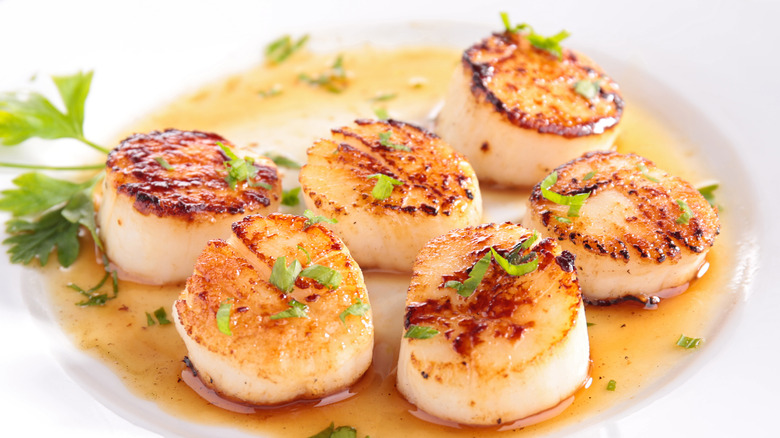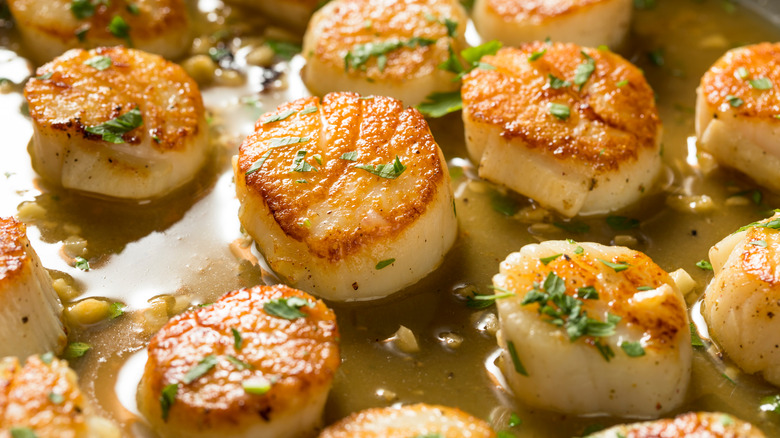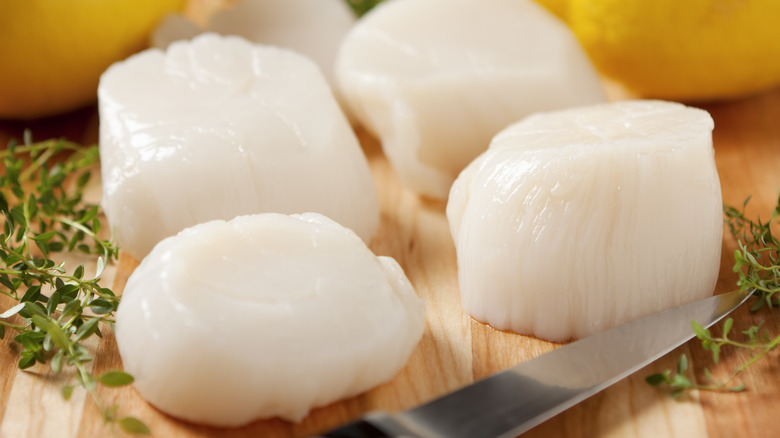The One Step You Should Skip For Meltingly Tender Scallops
Sea scallops are absolutely delicious when cooked correctly, and as fancy and elegant as they feel, they can be one of the simplest things to prepare at home. But it's dangerously easy to overcook, taking your scallop from a melt-in-your-mouth mollusk to a rubbery regret. So how do you ensure that doesn't happen?
One of the best ways to cook scallops is to give them a nice sear, developing that lovely crisp coating to juxtapose their natural meaty softness. In order to achieve that desired golden brown sear while keeping your scallops nice and tender — and thus not wasting the hard-earned money you spent to bring them home — there's one step you may have thought was crucial that you're better off skipping: the flip. With sea scallops — as well as certain filets like salmon, sea bass, and rockfish — cooking on one side is all you need because these types of seafood are so delicate.
How to achieve the one-side scallop sear
The method is essentially to sear on one side while you baste the other, letting the bottom brown while the rest of the meat gently cooks through. To do this, you need to make sure your scallops are completely dry to eliminate any moisture, and you need to have an extremely hot pan. Season your scallops on one side, add oil to your hot pan, and sear them seasoned-side down for just two minutes, making sure there's good contact with the pan and leaving them untouched.
After two minutes, add some butter to the pan and begin to baste your scallops, constantly spooning some liquid over the tops until they turn opaque. This should only take another minute or two; once you see that your scallops firm up a bit, they're ready to enjoy. Serve them sear-side up and garnish with whatever you please.
Tips for buying sea scallops
Sea scallops tend to cost a pretty penny per pound. So if you're planning on searing some at home, you want to get the most out of your money — make sure you choose wisely. Here's what you need to know about buying sea scallops at your local grocery store or fish market.
Sea scallops can come with anywhere from 10 to 40 scallops per pound. When you see them labeled U10, U20, etc., that indicates the number of scallops that make up a pound (meaning that the smaller numbers will be larger in size). You may see them named differently, as well, such as diver scallops, jumbo scallops, or day-boat scallops. Diver scallops tend to be the most expensive because they're sustainably sourced by scuba divers who collect them from the ocean floor.
Another label to pay attention to is whether the scallops are wet-packed or dry-packed. Wet-packed scallops are soaked in sodium brine to extend their shelf life, which also weighs them down with water weight and increases unwanted moisture when you cook them. Look for dry-packed scallops, which means they're packed as is without any chemicals or extra liquid.



